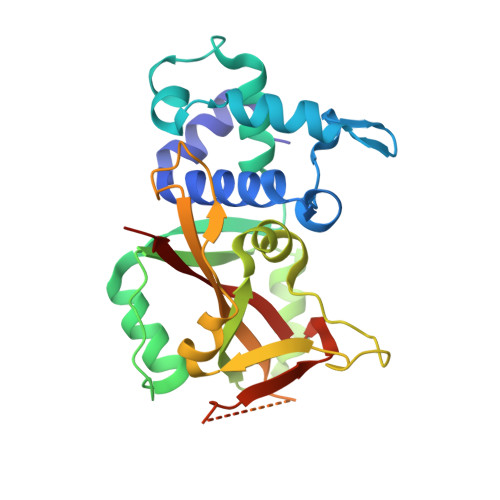In Vitro and Cellular Probes to Study PARP Enzyme Target Engagement.
Wigle, T.J., Blackwell, D.J., Schenkel, L.B., Ren, Y., Church, W.D., Desai, H.J., Swinger, K.K., Santospago, A.G., Majer, C.R., Lu, A.Z., Niepel, M., Perl, N.R., Vasbinder, M.M., Keilhack, H., Kuntz, K.W.(2020) Cell Chem Biol 27: 877-887.e14
- PubMed: 32679093
- DOI: https://doi.org/10.1016/j.chembiol.2020.06.009
- Primary Citation of Related Structures:
6W65 - PubMed Abstract:
Poly(ADP-ribose) polymerase (PARP) enzymes use nicotinamide adenine dinucleotide (NAD + ) to modify up to seven different amino acids with a single mono(ADP-ribose) unit (MARylation deposited by PARP monoenzymes) or branched poly(ADP-ribose) polymers (PARylation deposited by PARP polyenzymes). To enable the development of tool compounds for PARP monoenzymes and polyenzymes, we have developed active site probes for use in in vitro and cellular biophysical assays to characterize active site-directed inhibitors that compete for NAD + binding. These assays are agnostic of the protein substrate for each PARP, overcoming a general lack of knowledge around the substrates for these enzymes. The in vitro assays use less enzyme than previously described activity assays, enabling discrimination of inhibitor potencies in the single-digit nanomolar range, and the cell-based assays can differentiate compounds with sub-nanomolar potencies and measure inhibitor residence time in live cells.
Organizational Affiliation:
Ribon Therapeutics, 35 Cambridgepark Drive, Suite 300, Cambridge, MA 02140, USA. Electronic address: twigle@ribontx.com.























